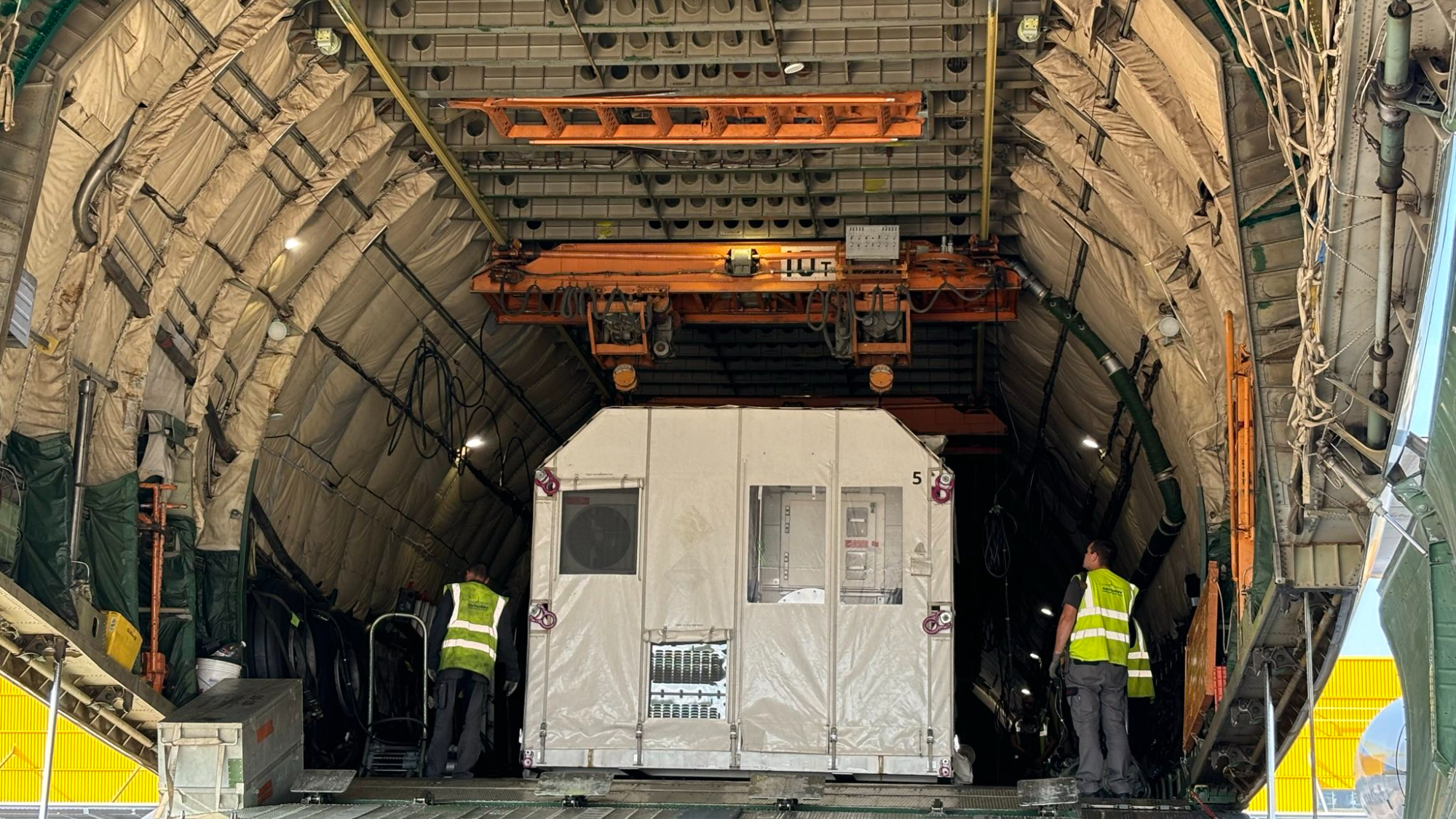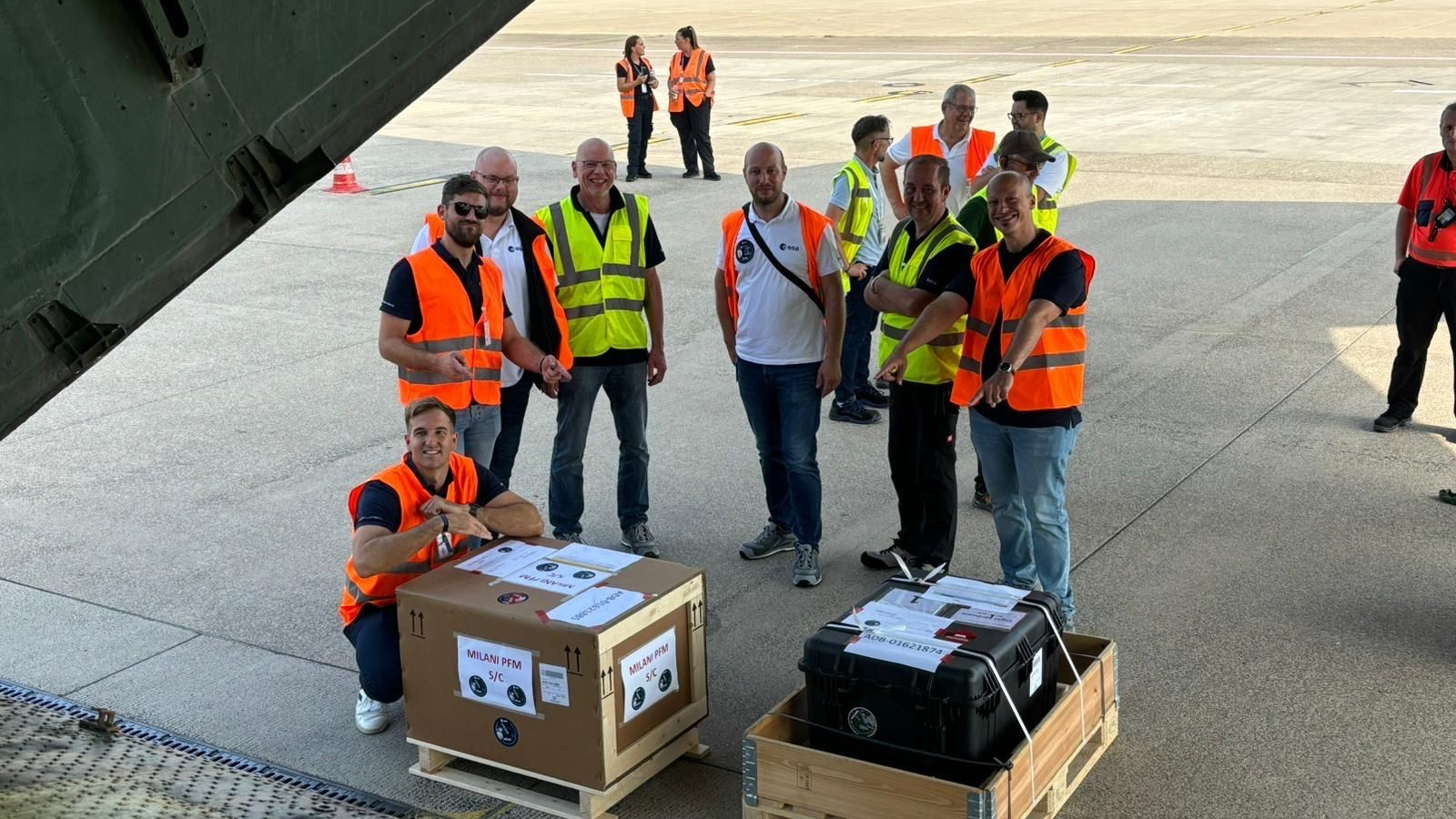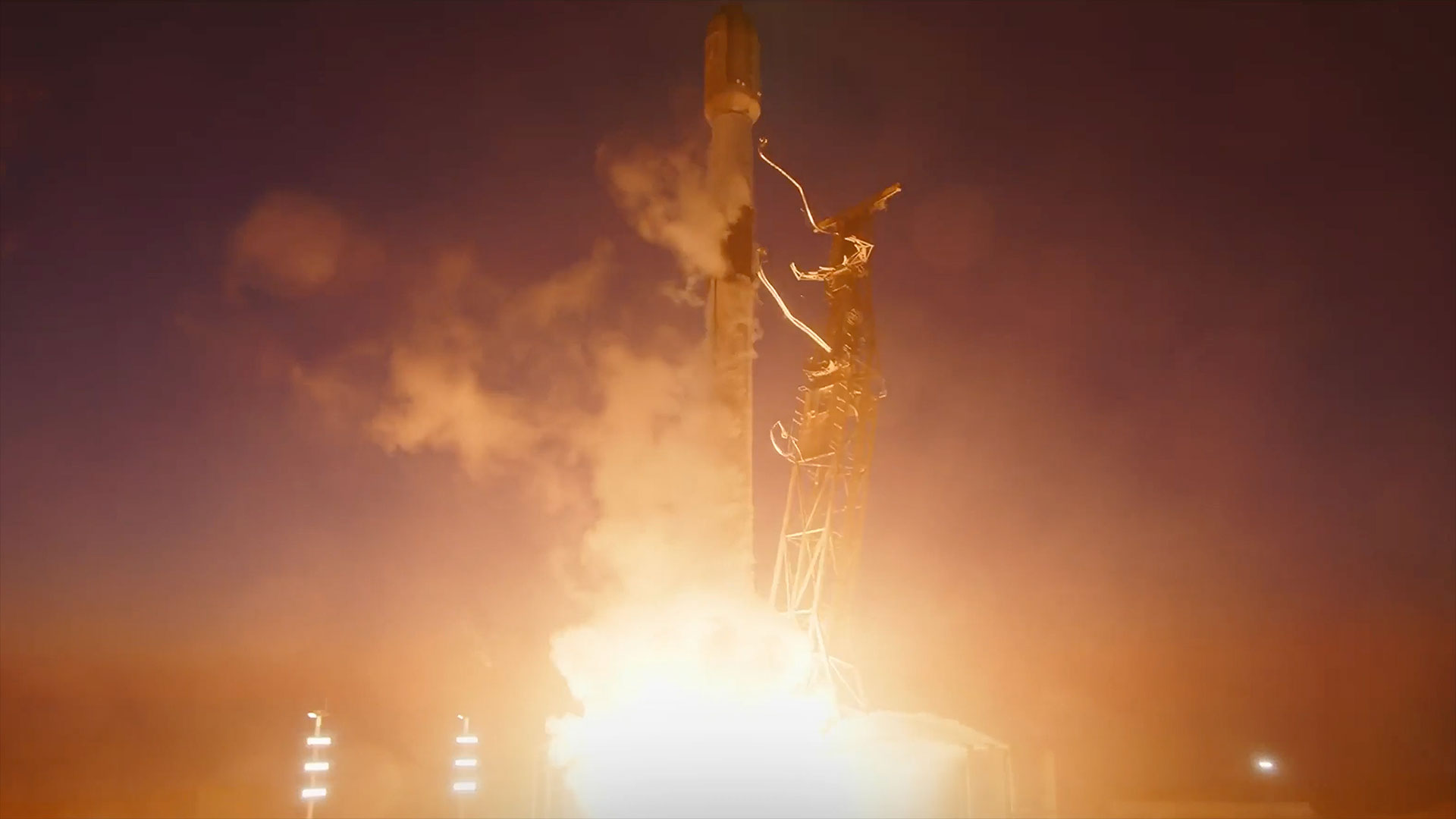Europe's Hera probe to launch Oct. 7 to inspect asteroid NASA smacked in 2022
'We're very excited to go back and see what it looks like.'

Europe's highly anticipated Hera mission to catalog the wreckage of the asteroid Dimorphos has arrived at its Florida launch site for final checks ahead of its planned liftoff early next month.
The main Hera spacecraft and its two partner cubesats, named Milani and Juventas, are set to launch atop a SpaceX Falcon 9 rocket on Oct. 7 at 10:52 a.m. EDT (1452 GMT) from Cape Canaveral Space Force Station in Florida. They'll arrive at Dimorphos in late 2026, on a mission to study the aftermath of NASA's planetary defense test, which intentionally smashed a spacecraft into the asteroid in September 2022, shortening its orbit by 33 minutes and permanently altering its shape.
"We're very excited to go back and see what it looks like," Patrick Michel, Hera's principal investigator, said at the Europlanet Science Congress on Friday (Sept. 13) in Berlin.

Hera will assess the size and depth of the crater on Dimorphos created by NASA's DART (Double Asteroid Redirection Test) spacecraft, and determine whether the impact did indeed reshape the rubble-pile asteroid, as early simulations indicate. Once deployed, the two cubesats will for the first time assess Dimorphos' internal structure, surface minerals as well as gravity, data that will help scientists correctly reproduce the asteroid's final structure in their computer models, Michel said at the conference. Such models will then inform future planetary defense missions that similarly aim to deflect asteroids headed toward Earth.
Related: DART's epic asteroid crash: What NASA has learned
Hera and its two cubesats arrived at their launch site in Florida in early September following a transatlantic flight from Germany, with a stop in Ireland. The mission's launch window opens on Oct. 7 and closes on Oct. 27, according to the European Space Agency (ESA).
Hera has a date with Mars in March next year; it will receive a gravity boost from the Red Planet to put it on course toward Dimorphos. During the maneuver, Hera will swing past the Mars moon Deimos and test onboard science instruments and its main camera.
Get the Space.com Newsletter
Breaking space news, the latest updates on rocket launches, skywatching events and more!
"It gives us another chance to calibrate our instruments and potentially to make some scientific discoveries," Michael Kuppers, who is Hera's project scientist at ESA, said of the Mars flyby in a previous statement.
If all goes to plan, the spacecraft will arrive at Dimorphos in late 2026 and inch closer to the asteroid's surface through repeated flybys until it ends up less than 0.6 miles (1 kilometer) away, Kuppers said at the conference.
The mission is expected to gather at least six months of close-up observations of the asteroid, which at 525 feet (160 meters) wide is about the size of the Great Pyramid of Giza in Egypt. Dimorphos' surface will be more visible at that point than it was in the immediate aftermath of the DART collision; the rocks and dust blasted into space by the smashup have since floated away, likely on their way to spark meteor showers on Mars and possibly Earth.
Hera's images of Dimorphos will also help determine whether DART's crash indeed knocked the asteroid out of alignment such that it now wobbles back and forth, as scientists have suggested.
"Dimorphos might also be 'tumbling,' meaning that we may have caused it to rotate chaotically and unpredictably," Derek Richardson, a professor of astronomy at the University of Maryland and a DART investigation working group lead, said last month in a university statement. "One of our biggest questions now is if Dimorphos is stable enough for spacecraft to land and install more research equipment on it."
That answer might arrive at the end of Hera's mission, when its two cubesats Milani and Juventas will attempt to land on Dimorphos. Hera itself might land on Didymos, Dimorphos' larger companion — both spacecraft orbit a common center of mass — although the specifics of end-of-mission scenarios are still under discussion, Kuppers said on Friday.
Join our Space Forums to keep talking space on the latest missions, night sky and more! And if you have a news tip, correction or comment, let us know at: community@space.com.

Sharmila Kuthunur is a Seattle-based science journalist focusing on astronomy and space exploration. Her work has also appeared in Scientific American, Astronomy and Live Science, among other publications. She has earned a master's degree in journalism from Northeastern University in Boston. Follow her on BlueSky @skuthunur.bsky.social
